typhoons and mold
Typhoons and Mold
2019.08.05
Minamiise, Mie, Japan
For every traveling sailor, comes a time when the boat has to stay alone in a foreign country. For us, this happened this year in Japan (see sailing in japan). We'd never left Pino alone before, never for more than a week. We were apprehensive at first, but decided it would be a good learning experience, for us and our beloved.
Whenever we mentioned leaving our boat in Japan, people would say, "Aren't you afraid of typhoons?" Our 6 month leave coincided with the time of year when typhoons affect Japan, with August to October being the worst months. We were worried, but knew that if we prepared well, Pino would be fine. We spent weeks planning our departure, doing research on how to keep a boat safe in a storm, but also, how to keep mold and insects at bay in our absence.
While in Canada, I had anxiety at night, vivid dreams about what was happening to Pino. These dreams involved us returning to the boat, only to find it turned into a moldy, water-logged cockroach motel. Having no experience leaving our home behind, I had no guarantee that we had done enough.
When we returned 6 months later, we found no mold, no bugs and little to no damage, in fact, we slept in that same night. Pino endured weeks of hot Japanese summers, tropical rain and typhoon-strength winds. We're happy to say that overall, our preparations were indeed, enough.
Below is a short list of things to remember, things we learned, when came time to prepare our boat for long-term storage:
- Ventilation is key.
- Clear the decks.
- Don't keep food.
- Clean everything.
- Store away everything.
- Don't leave openings.
- Tie everything down.
ventilation
Summers in Japan are hot and humid, with temperatures reaching as high as 36°C (96.8°F). In early summer, we left Pino to visit friends in Tokyo for a week. When we came back, we found mold on the walls, and over clothes we'd left lying around. This happened because our boat was closed up too tightly. There was moisture present, and no airflow to prevent the growth of mold and mildew.
We have four dorades, but for a boat sitting unattended, most dorade boxes do not result in enough air exchange by themselves to prevent moisture buildup (our dorades are very small and therefore especially bad). To remedy this, we installed two fans to keep the air moving, one at the bow and one at the stern.
We considered getting DC fans from a marine store, but we abandoned that idea because the models we saw were very, very expensive. And so instead we visited Komeri, a local hardware store, and purchased two Panasonic exhaust pipe fans. Being at a marina, we had access to shore power, which meant we could have AC-powered fans.
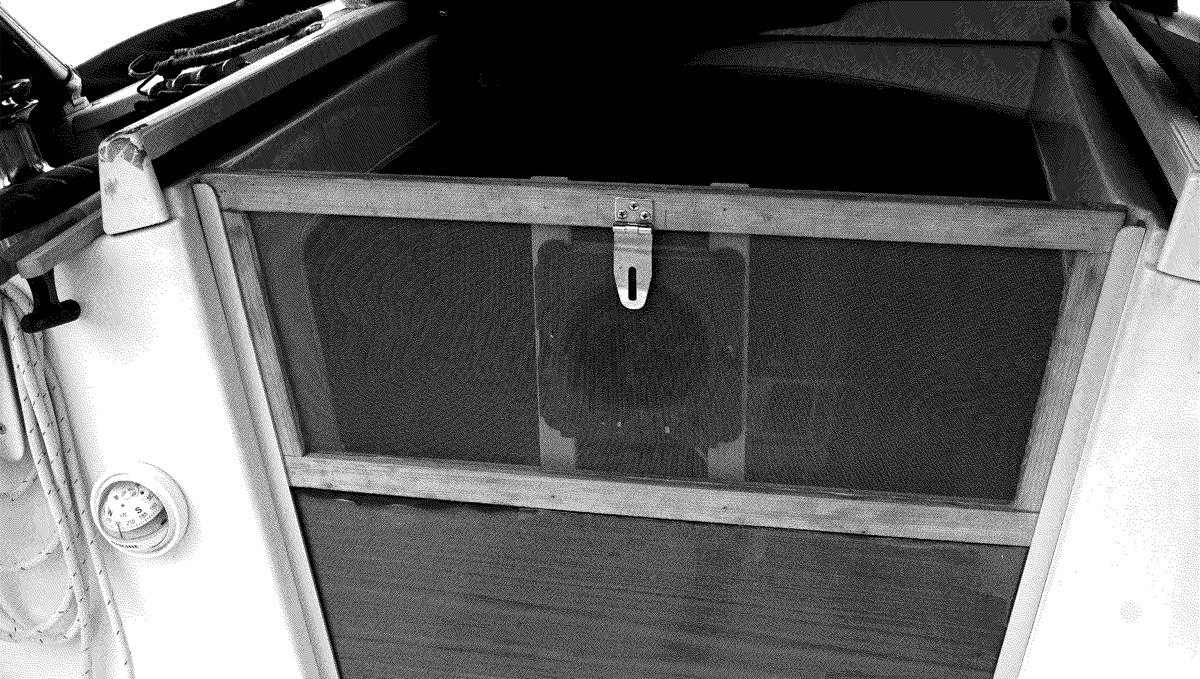
For the summer, we made a custom screen door for the companionway, and installed the first fan in it. It allowed air to flow in and out through the screen, and the powered fan would help it along.
"You mean left your boat unattended with only a screen door?" Yes. Theft is very uncommon in Japan, and our marina was a 30-minute walk to the nearest town, which has a small population consisting mainly of elderly people. The marina had staff onsite most days, and at night, the paths were also guarded by the resident deers and wild boars.
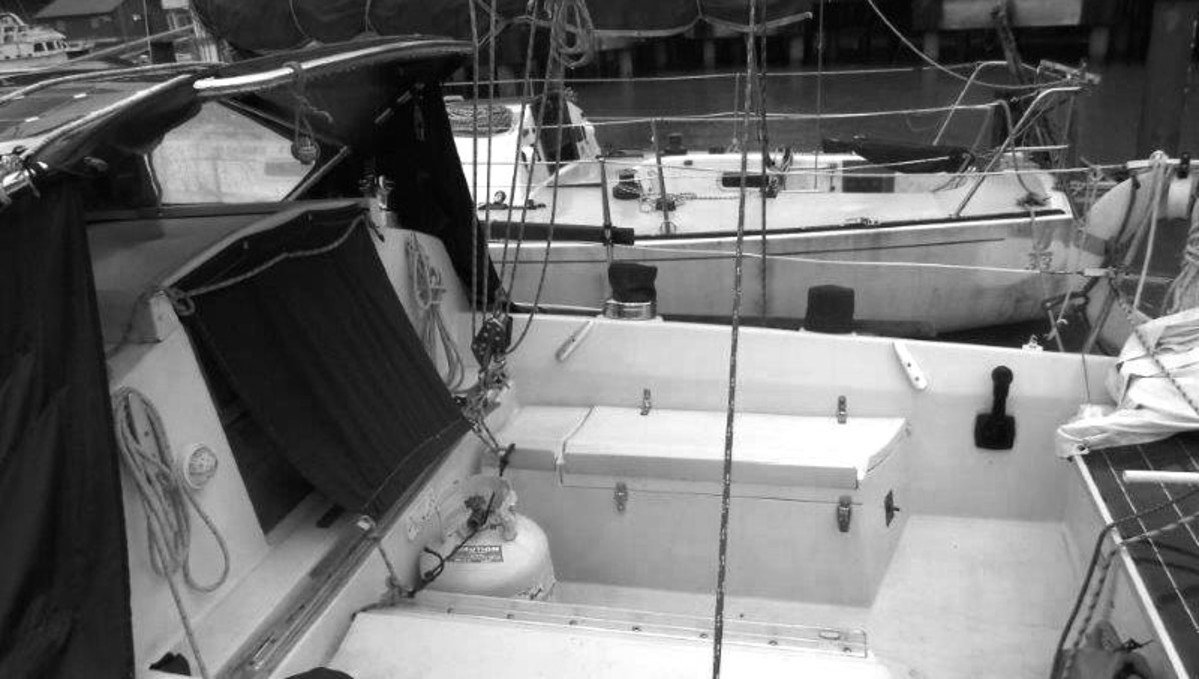
To make sure water wouldn't come in through the screen, we attached a piece of canvas from the top of the sliding hatch door, held at an angle, with its 2 bottom corners attached to separate points. We stitched a pocket at the bottom of the piece of canvas, and slid an old mainsail batten in it. Keeping the canvas at an angle kept the rain off, while allowing air to flow. The canvas stayed put, even after the passage of typhoon Faxai(cat 4) and super typhoon Hagibis(cat 5).
We installed a second fan in the head, near the bow. This fan would suck the air out. With two fans installed, the air would enter from one end and exit from the other.
Our head was previously equipped with a solar fan, an accessory ill-suited for offshore waters. It came with the boat. Waves that washed over the deck would sometimes come spilling inside through it, drenching whoever was unlucky enough to be in the head at that moment. One day, after a boisterous sail, we discovered the fan motor had corroded, and so we removed it. We filled the gap in the ceiling with a spare deck plate we had onboard. Our plan was to install a temporary fan, with more pieces sourced from Komeri.
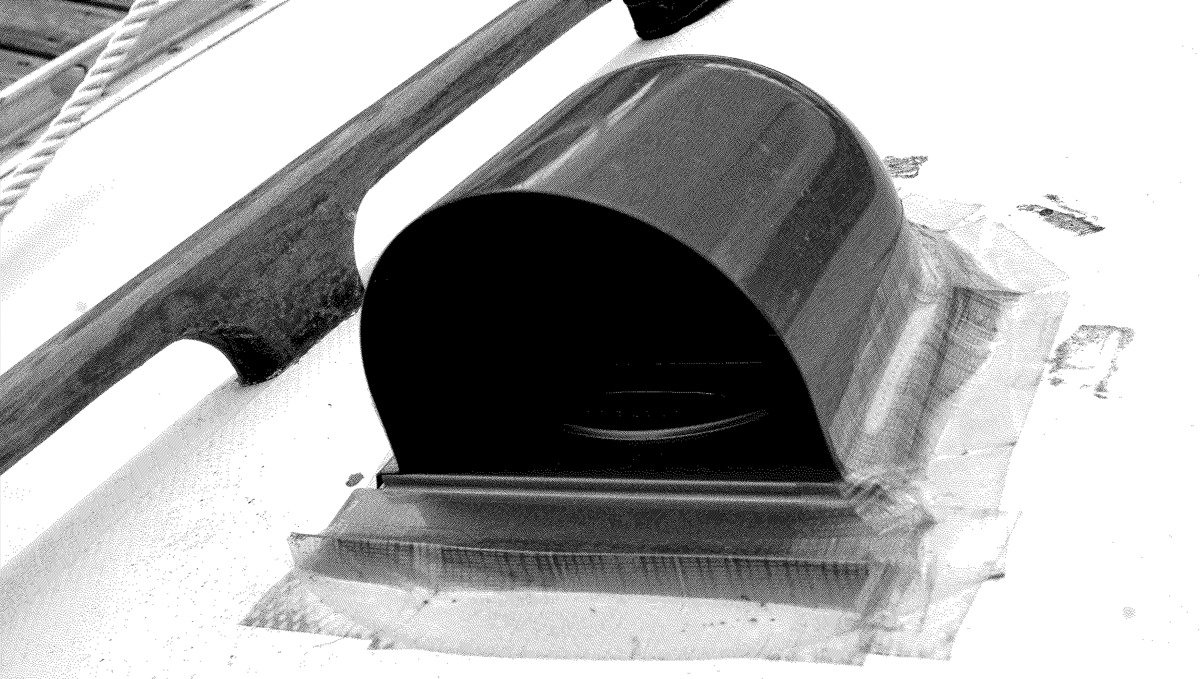
Komeri supplies goods for houses, not boats, but we found suitable candidates. We bought a vent — with a dorade-like shape — which fit our deck plate hole. We also purchased a corner pipe which would connect to the vent from inside, and the fan would fit into the mouth of the corner pipe. A perfect fit. This setup, while clunky-looking, worked well. We added foam around the pipe to stabilize it, and to stop water from coming inside.
When we left, we opened the head door, and attached a bungee cord to the handle, keeping it propped open to allow air to pass.
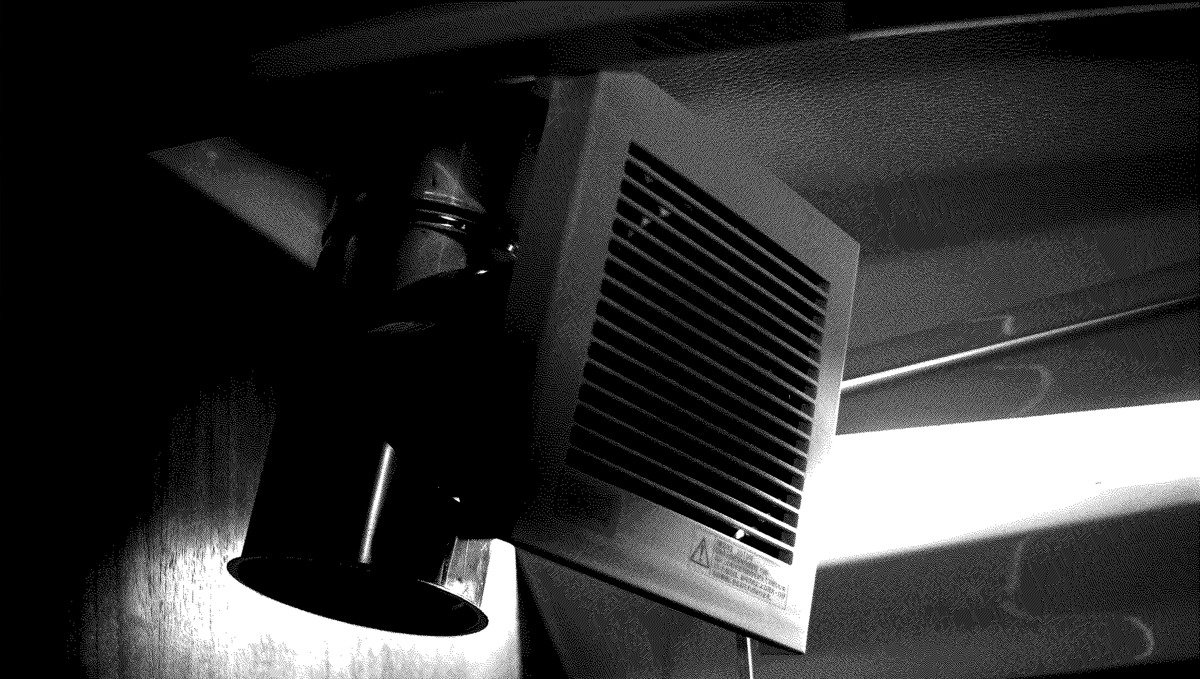
food
Food on a sleeping boat is a buffet for insects. They will be more than happy to feast on whatever you leave behind.
In warm climates, weevils can spawn from grains, beans and seeds. Infestation-prone products include wheat, corn, macaroni, oats, barley, sorghum, kaffir seed, and buckwheat. To prevent unwanted lodgers, we ate up most of our grains, beans and seeds and dumped the rest. We stored the less-problematic items — like gluten flour and nutritional yeast — in glass or sealed containers.
Adding oxygen absorbers (powdered iron oxide packets) to the jars is a good way to keep products free of moisture, we didn't do this, but will next time.
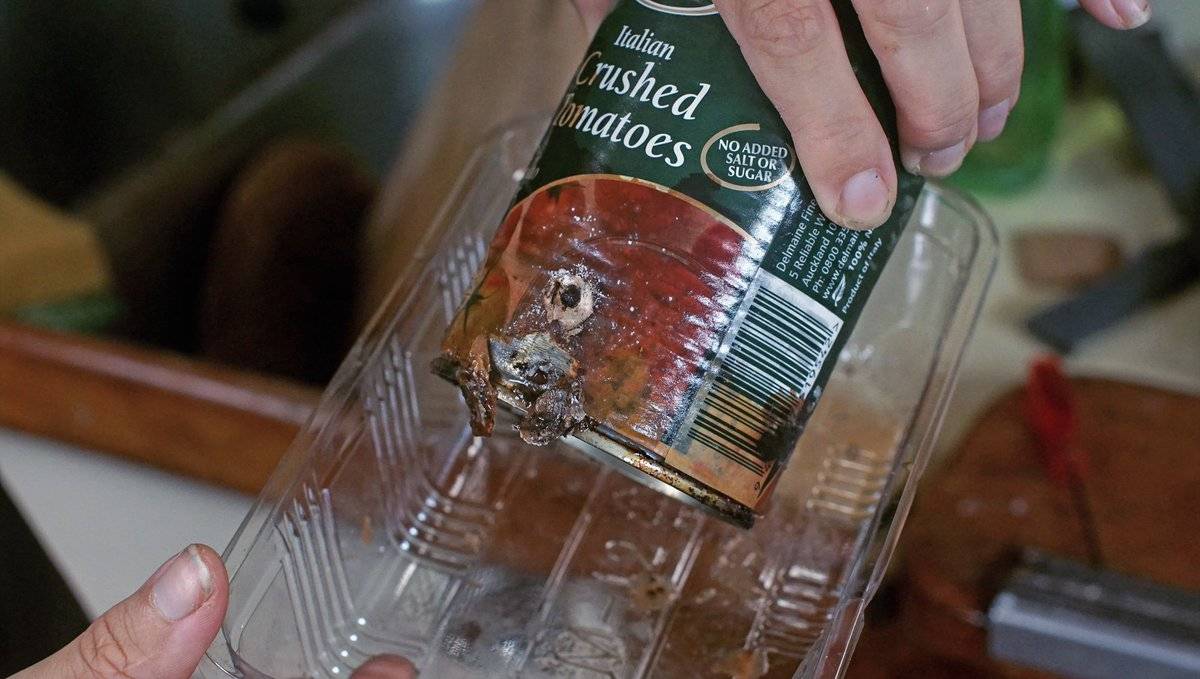
On a boat, canned products are common. We had cans left over from our time in New Zealand and Fiji. We inspected the cans, and discarded the ones with too much rust, the rest, we stored in a sealed plastic bin. We had previously removed the tags from the cans, marking the contents in permanent marker. But despite all our preparations, we made mistakes. I later opened several cans labeled as 'beans' which turned out to be 'mushrooms' — Woops! Mindfulness is key when labeling cans. We had to rethink our meal — not a big deal. The incident made us laugh, we wondered what else was falsely tagged as mushrooms.
decks
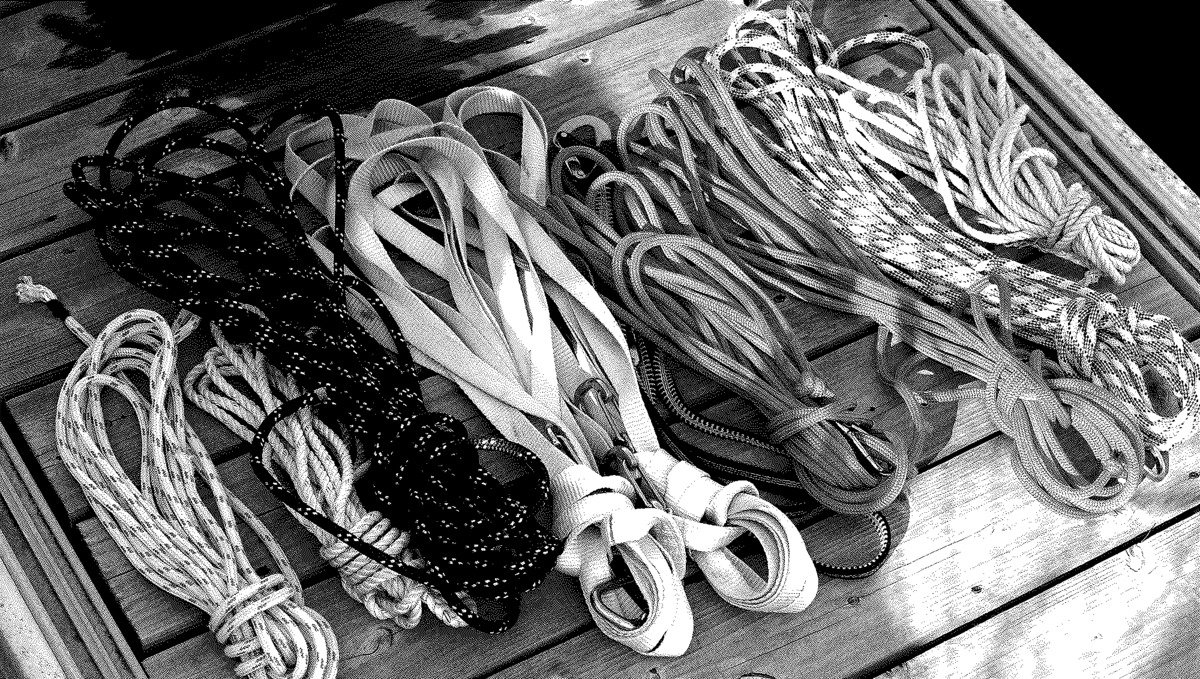
Removing all items from the deck ensures that nothing will go missing, it's also a way to keep our gear safe from wear and chafe. We removed our sails, hosed them down and left them to dry. We knew the sails had to be completely dry on both sides before being refolded and stowed. If the sails were stowed while still partially wet, mold and mildew could develop. Lacking a space on land to stow them, we put both sails in the v-berth.
Washing lines, prior to stowing them, will extend their life. We washed all of our lines, soaking them for a few hours, and rinsing them out in several changes of fresh water. They stayed outside to dry, hanging from the lifelines. When completely dry, we found a spot for them in our cockpit locker to keep them out of the sun.
We removed as much of our running rigging as we could, but lacking time we had to leave some of the halyards in. In an ideal world, all of them should have been removed, and replaced with sacrificial lines. Removing halyards is no easy task. The way to do this without incident, is to stitch a messenger line to one end of the halyard, to make it easier to run them back in. It's hard to check the condition of a halyard while in the mast, but taking them off for storage is a good time to do it. While doing this, we noticed that our main halyard would need replacing next season.
We also tied the boom down to restrict its movements, using a rope from the boom end, connecting to two opposing cleats.
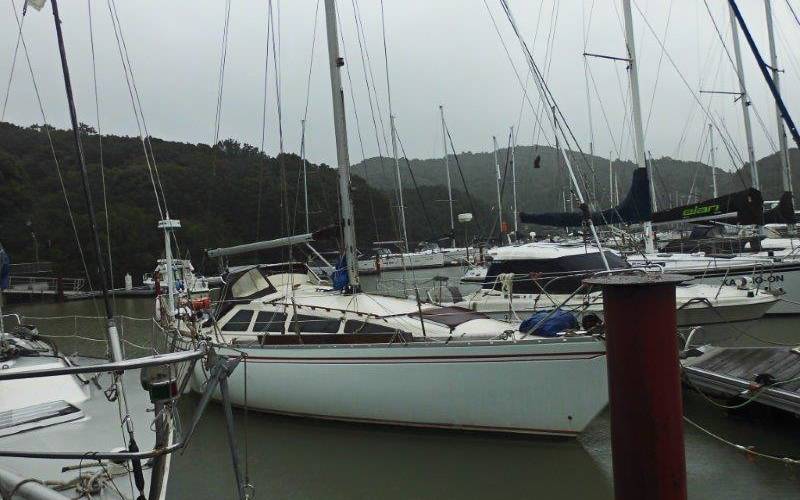
Our boat lacks a bimini, but has a dodger (sprayhood). We kept the dodger on, but opened the front. The front of the dodger has a zippered flap. In the summer when it's hot, it can be folded up to allow air to pass through.
When Typhoon Krosa brushed by Shikoku, its effects reached as far north as Mie. The day before the storm, we saw other yachties preparing their boats, and we watched what they did. Many of the boats in the marina have no dodgers (being racing boats), but the ones that had them kept them up, and opened the front flap. We mirrored their preparations. When in doubt, do like the locals. Our dodger suffered no damage. We put extra lines on it to as a precaution. We removed both of our lee cloths, washing them before rolling them up and stowing them.
The full diesel and gas bins were stashed away inside the aft locker, with the empty ones going on the starboard locker, along with all remaining loose items (buckets, spare lines etc).
cleaning
Residual salt and dirt, in a hot and humid setting, can accelerate the formation of mold and mildew. To prevent this, we cleaned everything. And I do mean EVERYTHING. We washed our clothes, settee cushions, foul-weather gear, glass jars, the inside of lockers, the walls, floors — everything.
A day before we left, we wiped down all surfaces with white vinegar using a cloth and spray bottle. Tip: For better results, heat the vinegar prior to use. If heating the vinegar isn't an option, let it sit on the surface for 10 minutes before wiping it off.
Washing the cushion covers was a long, but necessary step. The settee cushions have covers with zippers, but are held down by buttons that are stitched on. These buttons give the cushions a better shape, but given the fact they'd begun to rust, we cut them off and discarded them. We removed all the covers, and hand washed them in warm soapy water. We washed them by hand because we feared that they would shrink, and let them dry in the sun.
The cushioned back rests were tricky to remove. They double as doors to lockers, and to clean them, we had to unscrew and remove all 6 doors. It had to be done. It was work, but it gave us the opportunity to inspect and oil the hinges and ball catches.
Winters in Mie aren't too cold, so we didn't think it necessary to winterize our engines (Turnip, inboard and generator). Before we left, we filled the main diesel tank and added stabilizer — something we do on every fill up. Stabilizer displaces water, should there be moisture in the piping or elsewhere. We closed the raw water intake valve, and shut the diesel intake. For our outboard engine, we removed the leftover gas, added a new batch along with some stabilizer. Adding STA-BIL will keep the gas fresh for up to 12 months. Another step was to change the oil, we did the same to our gas generator.
washing
To protect papers, shoes, clothes, blankets, tools, books and small electronics inside the cabin, we put them away. We left nothing lying around.
We put our larger tools in a large, airtight, Pelican case, with the rest sitting in an old canvas bag. On our return, we found some of the tools in the canvas bag had rust on them. I soaked the affected tools in a tub of white vinegar for a few hours. The acetic acid in vinegar reacts to the rust, forming a layer on the metal. After soaking, I wiped the rust away and let the tool dry completely. I then added a light coating of WD-40, and stowed ALL tools in the Pelican case.
If we were to leave the boat again, we'll include moisture absorbers like silica gel or camphor tablets. Many products ship with silica gel packets, it's easy to accumulate and re-use them. They lose absorbency over time, but it's possible to recharge them by heating the silica in the oven. Camphor tablets are excellent at absorbing moisture, and double as a means of keeping both rust and insects at bay. The tablets undergo a process known as sublimation, starting from a solid state to a gaseous state without an intervening liquid state — in other words, they slowly melt away, leaving no mess. To extend the life of a camphor tablet, don't unwrap them, leave them wrapped in the cellophane, and with a pocket knife or a screwdriver, pierce the wrapper.
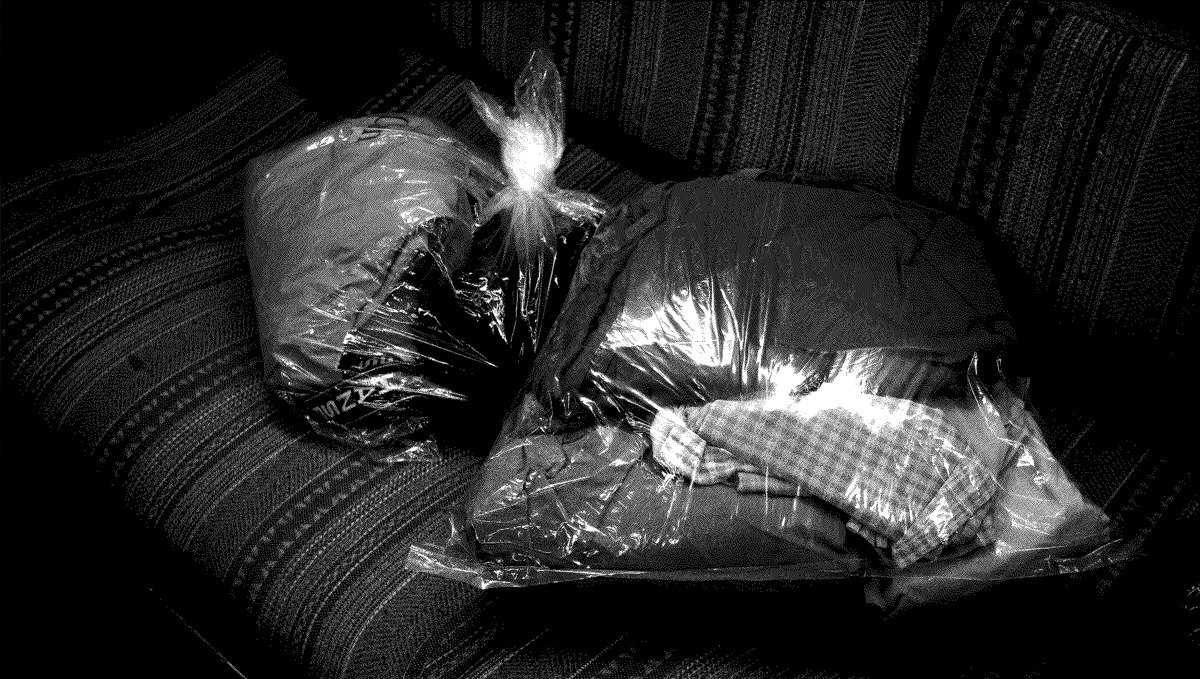
After washing and drying our clothes, sheets and blankets, we put them away in plastic bags, removing as much air as we could. In all, we had 6-7 bags stowed in the quarter berth. Our books, as well as any paper product, had a similar treatment. We bought sturdy plastic bags, packed the larger books individually, and the thinner volumes in stacks of two or three.
Electronics are prone to rust. We left with two laptops, but the Raspberry pi, Ipad and music instruments remained onboard, stored away in plastic bins. We'd kept many moisture absorbers from shipped packages, and added one to every storage box.
cabin
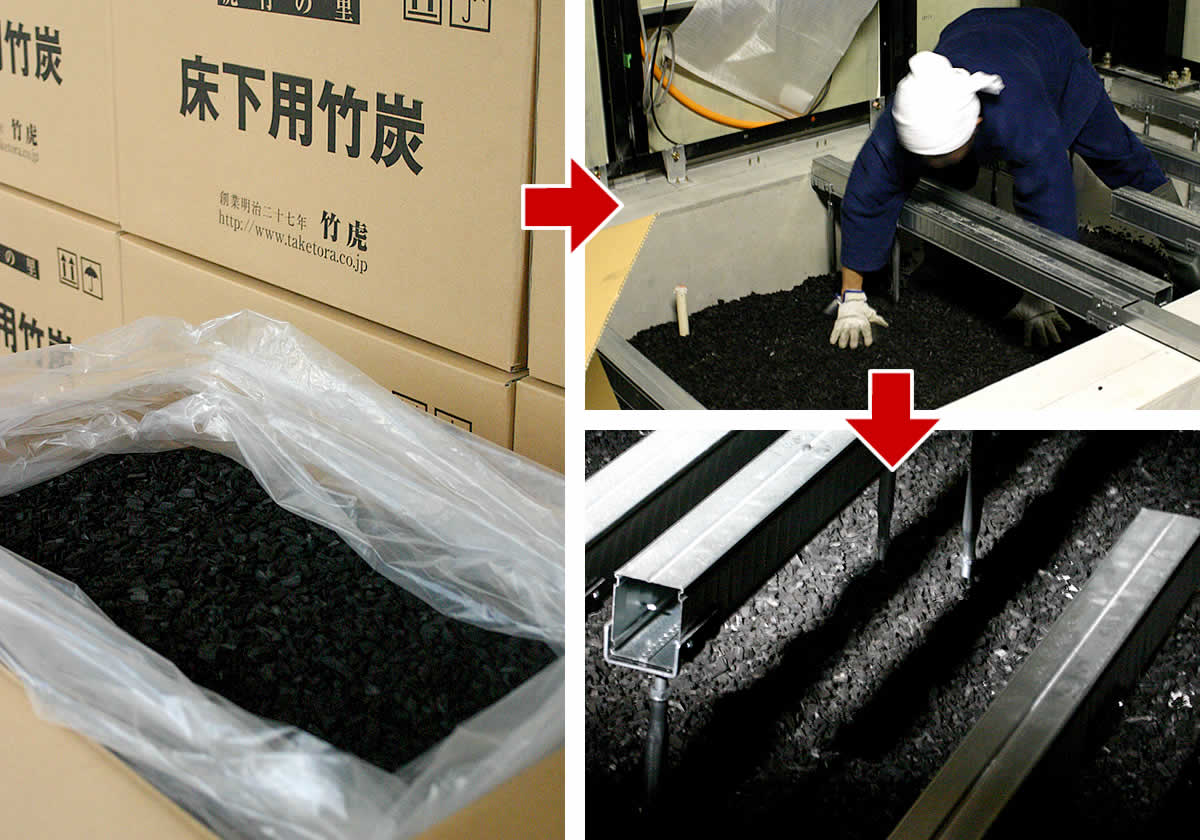
In old style Japanese houses, it's common to lay big bags of crushed bits of bamboo charcoal under the floorboards. Bamboo charcoal is hygroscopic, taking in 3-5X more water than regular charcoal. We purchased 5 bags through a supplier in Japan, and placed these at various key points in the boat: one with the sails in the v-berth, one aft, one in the head and the other two on lockers in the saloon. These bags last a long time, but we'd read that to increase absorption, it's important to air them out. On our return, we laid the bags out on deck for a few hours. While absorbing water in the air, charcoal also acts as a deodorizer. If looking for bamboo charcoal while in Japan, search for 粒竹炭(tsubu takezumi, grain bamboo charcoal), or simply 竹炭(takezumi).
To further decrease moisture levels in the cabin, we bought a large 10 kg bag of calcium chloride. Like bamboo charcoal, CH is a desiccant, and does a good job of drawing in water from the air. We bought some stockings at the convenience store, 3 in all, filled them with calcium chloride and went to hang them around the boat with 3 buckets sitting underneath them. We put one in the head, another at the foot of the mast and another near the engine room. We secured the buckets, to make sure they wouldn't tip over and spill their contents.
security
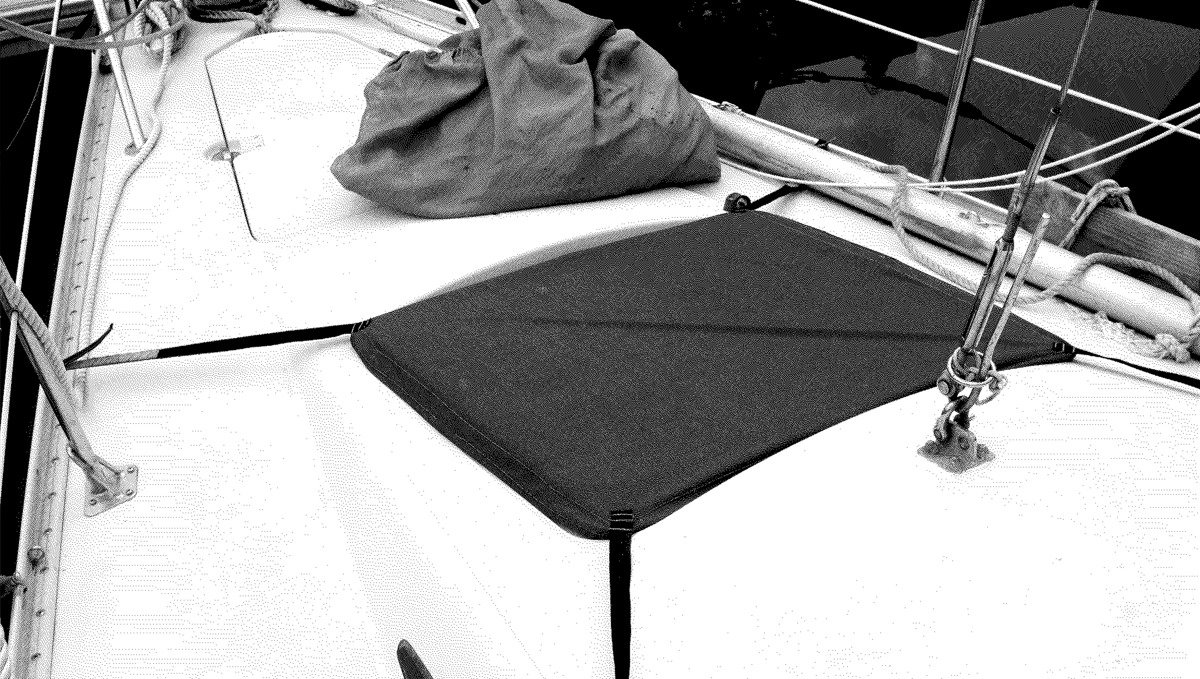
To protect the forward hatch from the sun, we fitted a piece of canvas to it. The piece of canvas covered the hatch, with the four corners attached to webbing leading to separate points on the toe rail. We stitched the ends of the webbing to the toe rails for added strength. For the hatch behind the mast, we used an old piece of foam-backed aluminum, and taped it up with the reflective side facing up. This would keep the sun out, and protect it from debris.
After changing the gas, oil and adding STA-BIL, our outboard returned to its perch on our aft rail. To protect it from the sun, we purchased a bike basket cover, a product sold in hardware stores in the bicycle accessories section. The shape fit Turnip's head well enough, but we tied ropes around the head to make sure the wind wouldn't take it, as it wasn't THAT well-adjusted.

After everything on deck was secured, came time to think about keeping the boat tethered to the dock. Our marina was well protected, but was opened from the West. A passing typhoon, we knew, could generate big waves. To prevent damage to the boat, we purchased two Unimer wraparound snubbers for our pre-spliced double-braided dock lines. We ran a long nylon 3-strand line on the deck to use as a spring line, with the working ends running through chocks on the bow and stern, and tied with a bowline to a dock cleat. The nylon lines, like snubbers, stretch and absorb shock in the event that waves did come into the marina. We doubled all of our lines, for safety, and placed as many fenders as we could between the dock and the boat.
We fitted our mooring loops with cut pieces of garden hose, to protect them against chafe, and did the same for all ropes that passed through chocks, any point that would rub against the dock or the boat.
Bugs
The best way to ensure that insects wouldn't find their way into our boat, was to secure all openings. We added screens to the two dorades inside. We couldn't do this for the aft dorades, so we bought some stockings and slipped them over top. This does reduce airflow, but it's better than leaving them open.
A big problem was our companionway door. It wasn't insect-proof. The sliding hatch rests forward of the doors, but has a gap on the sides. When we left Pino, we stuffed bits of foam into the cracks from outside.
When staying in Japan, come July, we noticed some intruders aboard Pino... gokiburi (cockroaches). We were used to keeping the doors open on warm summer nights, but this was something we couldn't do here. Cockroaches are everywhere in Japan, the climate is perfect for them. Our boat was docked near the main ramp, making it easier for them to make their way over from land. We chose this spot in the marina because it provided the best protection, while ideal in the event of a typhoon, it wasn't great for insects. We picked our battle. The best thing to do, as the previous section suggested, was to leave no openings. We bought capsules with boric acid, to try and lure out the ones camping aboard, but this proved ineffective. What did work, was putting up little roach motels. I wrote about these motels in another post (see a home for pino.
When we left, we bought some extra motels, and scattered them at key points around the boat. When we returned aboard 6 months later, all the traps were empty. No lodgers. We think this was because there was none aboard when we left, and that they weren't able to sneak inside afterwards. We used no sprays, but did buy cedar balls and scattered those in all cupboards. If we were to do this again, we'd replace cedar balls with camphor tablets, as they're supposedly better at repelling critters.
mistakes
In the beginning of this post, I mentioned that this was our first time leaving Pino alone. Even after doing a lot of research, we still made mistakes. In that last week, we had unexpected problems which slowed us down, and then there was the sweltering heat, which slowed our progress even more. Our minds were buzzing with information. We had to make sure we packed our suitcase, while ensuring all Pino-related tasks were taken care of, while practicing our upcoming XOXO talk, that last one occupied a great deal of space in our heads. Overall, we did a good job, but we can always do better. Here's what we did wrong:
Not asking for help. Our biggest failure was not asking anyone to water our batteries. Yep, we did it again. We have a poor track record when it comes to taking care of our lead acid batteries. This essential task escaped our minds. It shouldn't have, but it did. We returned to Pino 6 months later to find the house batteries were near-dry. The plates were exposed. We watered them on arrival, and did not see any build-up on the plates, but we have to assume that there was some damage.
Using a wrong fuse. I mentioned before that we were struggling to finish tasks on the last day, the heat was one of the culprits, and the other was our automatic bilge pump. We forgot to test it earlier, and discovered it wasn't working. We saw that the fuse had blown, and noticed some corrosion around the casing. The fuse we put in wasn't the right voltage, and we had none to replace it with. Luckily, the harbormaster had one that he gave us — phew. We replaced some of the wiring, as well as the casing, and added the correct fuse. If we hadn't checked, this would have been disastrous for Pino. We would have returned to a flooded boat. Always check your bilge pumps are working.
Not cleaning the freshwater tank. Emptying and cleaning the water tank is necessary when leaving the boat alone for a long time. We emptied it, but our tank never empties out completely because the drain isn't at the lowest possible point. To run it dry, we needed to wipe the pooling water with rags. In an ideal world, we would have cleaned, and dried it afterwards. We didn't do this. This was a task reserved for the last day, but then the bilge pump issue happened. We left this task unfinished, and left feeling rather guilty, knowing that it might cause problems on our return. When we got back, we opened the tank and saw no growth, this may have been because we routinely treat the water with bleach, although I'm not sure that this was what prevented it. I flushed out the tank anyway, adding more bleach, giving it a good clean before refilling it again.
Forgetting bags of food. In our last day rush, we forgot vacuum-sealed bags of cornmeal and buckwheat at the bottom of a locker. Luckily, these bags spawned no weevils.
Buying hard-to-remove snubbers. We've never been docked anywhere long enough to need dock line snubbers. In Japan though, it's essential. We bought two Unimer wraparound snubbers for our lines, but failed to see how difficult they'd be to remove. Removing lines from this type of snubber is very difficult. I had to do it to re-adjust their position on the line, and it was a very unpleasant experience. Purchasing Unimer U-cleat, while more expensive, would have been a better choice, as it's likely we'll be taking the snubbers on and off a lot.
Conclusion
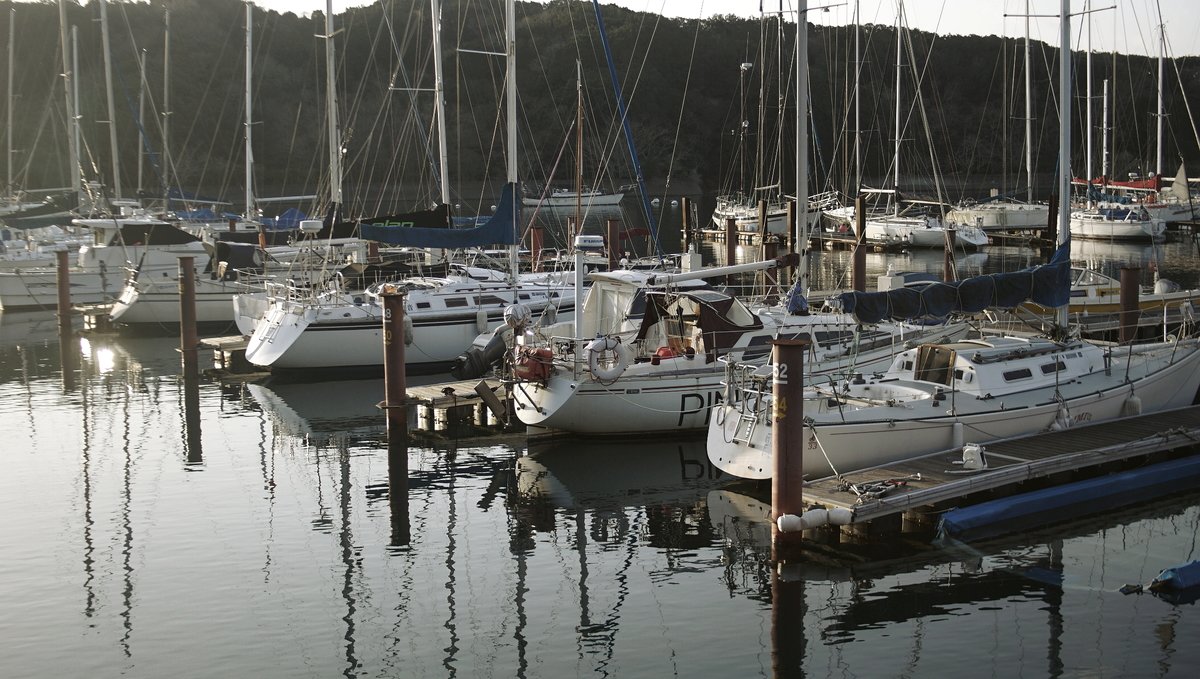
Storing a boat in a foreign country requires a lot of planning, work, patience and creativity. All in all, Japan is a good place to leave a boat, we don't regret doing it. While in the marina, the harbormaster and yard workers kept their eyes on Pino, they even sent us photos of our boat after a big typhoon passed through.
The reason we left Pino was because we wanted to spend another season in Japan. Now, we can say that it was worth it, it's an amazing place to return to after months of absence. It was worth the trouble. Would we do it again? If we have to, yes, and this time, we'll take better care of our batteries.
For the next adventure in Japan, read shimoda.
References
- Weevils on stored grains, Department of Entomology (Penn State University).
- How to keep your boat dry and prevent mildew, Liveaboutdotcom.
- Cleaning and sanitizing the kitchen, Ohio state university.
- Testing 12 mooring snubbers, Practical Boat Owner.
- Washing sheets and halyards and lines, Captnmike.